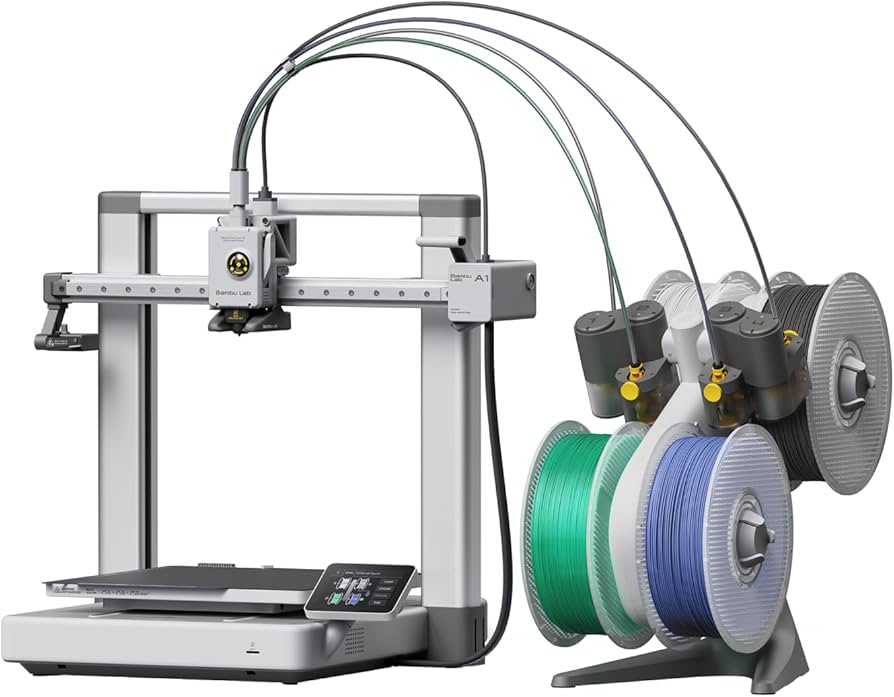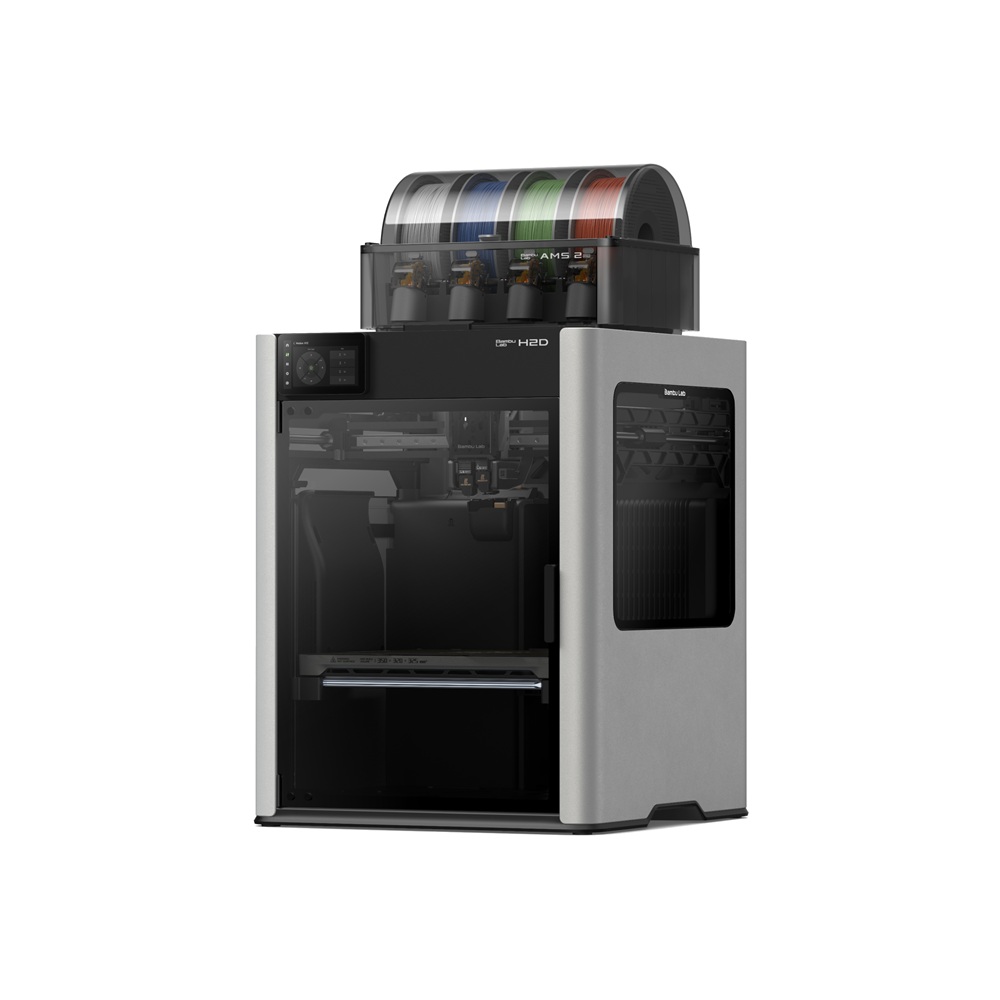Compare A1 vs H2D
Comparison between the best 3D printers
Choose the best 3D printer at the best price. The cheapest 3D printers are here.
Buy a 3D printer here with 3D Fila.
 |
 |
|
| Model | A1[BUY A1] |
H2D |
| Printing Material | Filament | Filament |
| Buy Filament for Bambu Lab A1 | Buy Filament forBambu Lab H2D | |
| Estimated price | $700,00 | $1899,00 |
| Manufacturer | Bambu Lab | Bambu Lab |
| Release Year | 2023 | 2025 |
| Print Volume [mm] | 256x256x256 | 350x320x325 |
| Printer Size [mm] | 385x410x430 | 492x514x626 |
| Weight [kg] | 8,3 | 42,3 |
| Power Loss Recovery | YES | YES |
| Enclosed printer | NO | YES |
| Bed Leveling | Automatic | Automatic |
| Filament End Sensor | YES | YES |
| Bed type | Heated | Heated |
| Power supply system | Direct Drive | Direct Drive |
| Standard nozzle | 0,4 | 0,4 |
| Maximum Nozzle Temperature [°C] | 300 | 350 |
| Maximum Bed Temperature [°C] | 100 | 120 |
| Maximum printing speed [mm/s] | 500 | 600 |
| Filament holder | YES | YES |
| Camera for supervision | YES | YES |
| Recommended filaments | PLA, PETG, TPU, PVA | PLA, PETG, ABS, ASA, TPU, PVA, Nylon (PA) |
| Recommended slicers | SuperSlicer, PrusaSlicer, Cura, OrcaSlicer | Bambu Studio |
| Maximum Resolution [mm] | 0,1 | 0,01 |
| Processor | ||
| Display | Touchscreen 3,5 | Touchscreen 5'' |
| Power Supply | 350 W | |
| Connectivity | Wi-Fi, Bambu-Bus, Cartão Micro SD | Wifi, Bambu bus, Cartão SD |
| Operating systems | Windows, Linux, Macbook | Windows, Mac, Linux |
| Date of registration in the system | 2024-07-17 | 2025-03-31 |
| Release date | 2023 | 2025 |
| Extra features | The BambuLab A1 printer features fully automatic calibration, multi-color printing with the AMS system, active flow rate compensation, quick nozzle change with a clip, active motor noise cancellation, a build volume of 256x256x256 mm³, a maximum extruder temperature of 300°C, and a heated bed of up to 100°C. In addition, it has high precision, a machine health management system and an intuitive 3.5-inch touchscreen interface. | Bambu Labs H2D combines high-speed 3D printing with a chamber heated up to 65 °C, dual extrusion with automatic nozzle switching, an AMS for filament drying and exchange, and AI sensors that detect failures. It offers optional laser and digital cutting capabilities, features intelligent calibration through computer vision, vibration control, enhanced fire safety, and real-time camera monitoring. |
| Support for multiple colors and materials (AMS and CFS) | YES | YES |
Notes * |
||
| Cost-benefit | 7 / 10 | 7 / 10 |
| Hardware | 4.2 / 10 | 7.2 / 10 |
| Tela | . | . |
| Print volume | 4 / 10 | 4 / 10 |
| Performance | 4 / 10 | 5 / 10 |
| [BUY A1] |
Conclusion |
| In conclusion, both the Bambu Lab A1 and H2D 3D printers offer impressive features tailored for different user needs, though they are priced and positioned significantly differently in the market. The A1 is an economical option for hobbyists and entry-level users, providing a reasonable print volume and a suite of useful features such as automatic bed leveling, connectivity options, and support for various filaments. Its compact size and lower weight make it a more user-friendly device in smaller workspaces. Conversely, the H2D targets more advanced users and professionals, justifying its higher price with larger build volume, enhanced material compatibility (including advanced filaments like Nylon), and cutting-edge features such as dual extrusion and better temperature control. The inclusion of AI sensors and advanced calibration technology also emphasizes its suitability for precise and complex print tasks. Ultimately, the choice between the A1 and H2D will depend on specific user needs, including budget constraints, intended printing applications, and space considerations. While the A1 is a solid and budget-friendly choice, the H2D's advanced capabilities make it more suitable for serious makers and industries demanding higher performance and versatility in 3D printing. |

